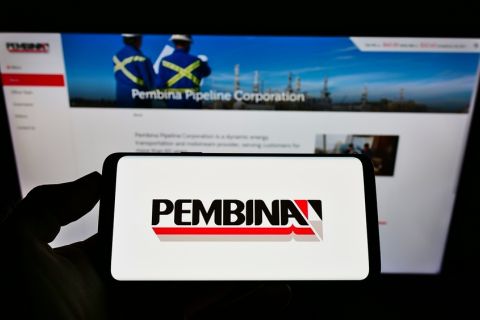
NEW YORK—The event may be nominally upstream but midstream’s ability to maximize returns was the hot topic as the Independent Petroleum Association of America’s (IPAA) annual Oil & Gas Investment Seminar (OGIS) began on April 3.
Producers from the Permian to the Bakken and Montney stressed the importance of integrating upstream and midstream development at the two-day conference.
“The midstream has been a big boost to us,” said Joseph W. Foran, founder, chairman and CEO of Matador Resources Co. (NYSE: MTDR). “It is very important to have the geology and the midstream right. As a result of us doing that, and keeping our balance-sheet discipline, all capital markets are open to us. Our bonds are trading above par and we have not had to draw anything on our revolver.”
Foran, whose company is active in the Delaware Basin and in the Eagle Ford Shale, added that “we got the message on midstream early, when we were first going public. We were constantly being asked if we had any takeaway problems. We did not, but from the nature of the questions, we knew that others did. We looked to that early, and have kept after it.”
Farther north in the Bakken, Oasis Petroleum Inc. (NYSE: OAS) also addressed the water question early and has kept after it.
“We have been thinking about water since 2012,” said Richard Robuck, senior vice president of finance and treasurer. “In October 2016 we brought on our Wild Basin development with full oil and gas gathering, as well as salt water disposal all together. Salt water disposal has had amazing growth, from $30 million in EBITDA in 2014 to $80 million last year. Projections for 4Q17 annualized EBITDA are $155 million.”
The external key to growth for Oasis is that the Dakota Access Pipeline has started line fill, but Robuck noted that the company is only able to take full advantage of that opportunity to move oil because it has oil to move.
“This past winter was tough all around, but we had less downtime, compared to other operators,” he said. “That is because we were able to keep our fluids moving, oil to takeaway and water to disposal. That enabled us to keep our operational momentum.”
Still farther north, Garth Braun, chairman, president, and CEO of Blackbird Energy Inc., a significant producer in the Montney, said that “we have a new non-binding gas handling agreement that we are going to convert to binding.”
He declined to detail the transaction, other than to add, “we have coordinated with a midstream company and another producer for processing. Gas handling and transport are critical to our production growth. We have one deal in place and may have another. There was a big fund in New York that said we were stranded, worthless. I put in infrastructure, and now we are not stranded.”
Beyond gas, Braun said that condensate is a major growth market for Canadian producers, another in which transportation and processing are essential.
“The need for condensate is big and could grow to 900,000 to 1 million barrels per day [as diluent for bitumen] to put down the pipeline to the U.S.,” he said. “We are currently getting CA$69 a barrel for condensate, a differential of CA$18 to CA$19 over Western Canadian Select. That is the one commodity where we in Canada have a competitive advantage over the U.S.”
Recommended Reading
Canada’s Completed TMX Pulling Crude Off of American-bound Pipelines
2024-11-04 - Trans Mountain completed work on the company’s namesake pipeline expansion on May 1. It was the end of a difficult and controversial pipeline project that started development in the 2010s under Kinder Morgan.
Diamondback, Kinetik Boost Stake in Permian EPIC Crude Pipeline
2024-09-24 - Diamondback Energy, in partnership with Kinetik, is boosting its takeaway capacity and ownership stake in the EPIC Crude pipeline after closing a $26 billion Permian Basin acquisition.
Electricity and LNG Drive Midstream Growth as M&A Looms
2024-09-26 - The midstream sector sees surging global and domestic demand with fewer players left to offer ‘wellhead to water’ services.
Pembina Acquires Gas Midstream Assets in US$295MM Deal
2024-09-09 - Pembina (PGI) is acquiring midstream assets in a CA$400 million (US$295million) agreement with Canada’s Veren Inc., which will continue to operate the acquired battery assets.
Uinta Railroad Up for Review as Supreme Court Term Begins
2024-10-03 - Court analysts say a decision on the proposed Uinta Basin railway, coming next year, could have a major impact on the energy industry.
Comments
Add new comment
This conversation is moderated according to Hart Energy community rules. Please read the rules before joining the discussion. If you’re experiencing any technical problems, please contact our customer care team.






